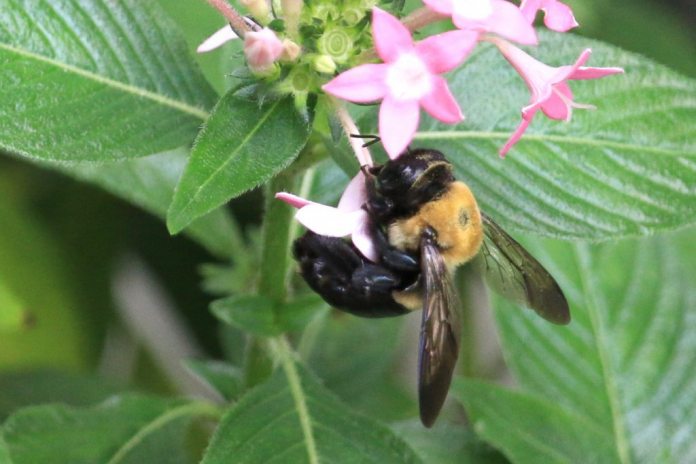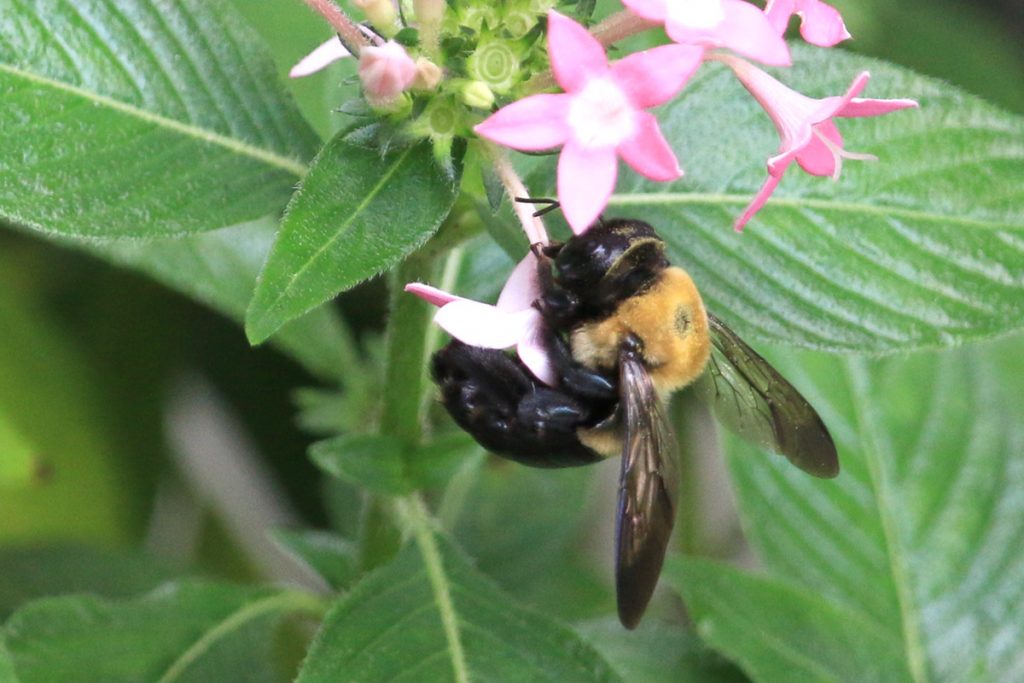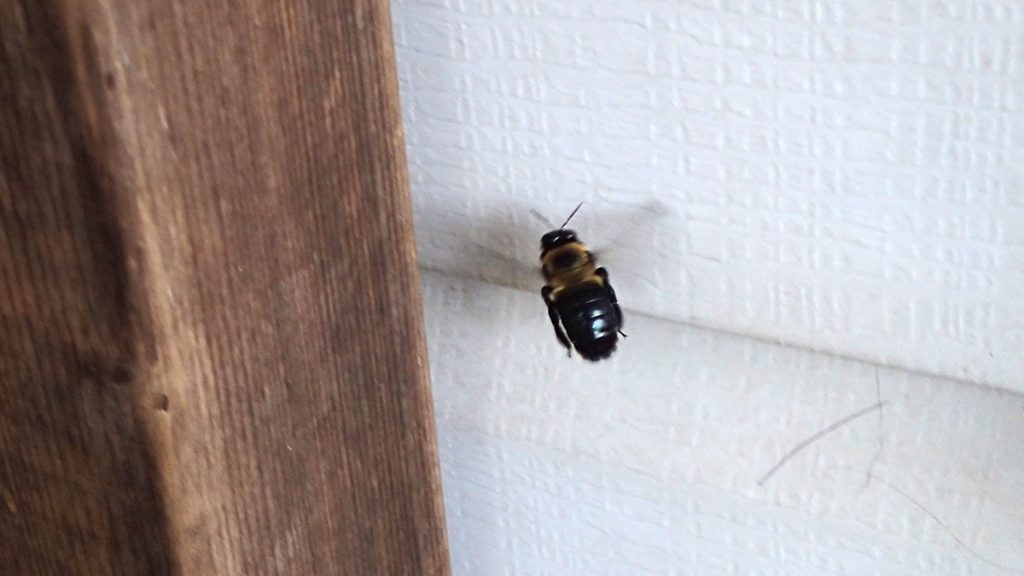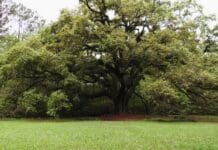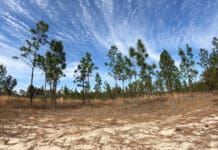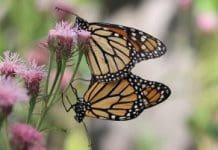When you think about bees, do you think about honeybees? Do you picture them black, yellow, and striped? In this video, we spoke with Dr. Rachel Mallinger from the University of Florida’s Entomology and Nematology Department about the native bees of north Florida.
Below is a collection of bees I’ve photographed in my yard, as well as on production shoots around our area. Florida has over 300 native species of bees, and there are over 500 in Georgia. This page will not list them all, however! Instead, you’ll see the bees that might commonly visit our yards, and maybe a couple that are less common. I’ll keep adding as I photograph new species, or witness interesting behaviors.
Even if you don’t see a photo of the specific bee you saw in your yard, maybe you’ll see the type. Sometimes, the best we can do is identify a genus of bees or a tribe. Some bees need several detailed photos, or a microscope, to differentiate between related species. This page organizes bees into their families. So you might be able to identify that you have a leafcutter or a sweat bee.
Carpenter Bees
Carpenter bees excavate their nests in dead wood, which, in our yards, can mean fences or any other (usually unfinished) wood structures in your yard. Understandably, some people regard them as pests. If you can tolerate a few perfectly round holes in a fence post, they are pollinators, and their nests are used by other pollinators as well.
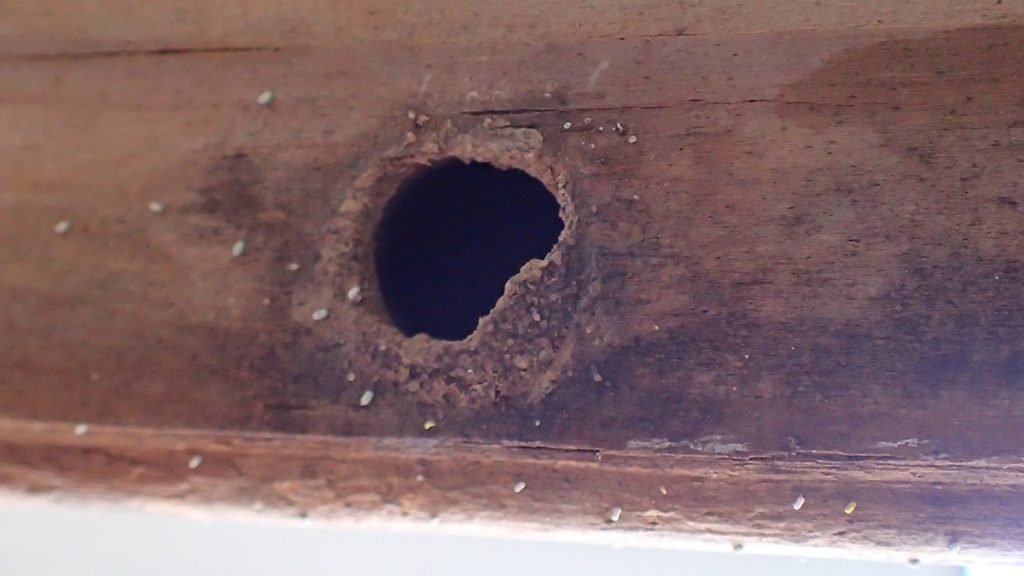

The nest above was abandoned by the carpenter bee that made it. A four-toothed mason wasp then took over, along with a cuckoo wasp that laid its eggs with those of the mason wasp. Both wasps are pollinators, and I’ve seen mason wasps hunt moth caterpillars in the yard.
One last note about carpenter bees: they look, at first, like large bumblebees. The easiest way to differentiate between the two is the abdomen. As I tell the kids, bumblebees have fuzzy “butts,” where carpenter bees have smooth abdomens. But, as we’ll see below, there is one other bee species in the area that mimics carpenter bees and their “smooth butts.”
Eastern carpenter bee (Xylocopa virginica)
There are two species we’re likely to see in our area. The males of both species are similar, though the southern carpenter bee has a purplish abdomen.
Rob Diaz de Villegas is a senior producer for television at WFSU Public Media, covering outdoors and ecology. After years of producing the music program OutLoud, Rob found himself in a salt marsh with a camera, and found a new professional calling as well. That project, the National Science Foundation funded "In the Grass, On the Reef," spawned the award-winning WFSU Ecology Blog. Now in its tenth year, the Ecology Blog recently wrapped its most ambitious endeavor, the EcoCitizen Project.
Rob is married with two young sons, who make a pretty fantastic adventure squad.

